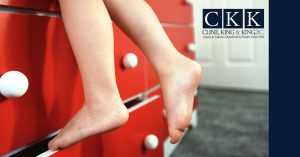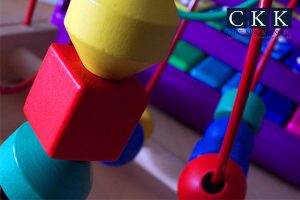 School is back in session. The backpacks are filled, the chairs and desks are cleaned, and the teachers are refreshed. But, for all the preparations parents and teachers make for students, the environments created for learning may not be ready and conducive for learning.
School is back in session. The backpacks are filled, the chairs and desks are cleaned, and the teachers are refreshed. But, for all the preparations parents and teachers make for students, the environments created for learning may not be ready and conducive for learning.
According to ergonomics, the study of work in various environments and tools used to perform tasks within the environment, there is a lot that could change to improve health and learning of students. From backpacks to chairs, some simple, low-cost ergonomic changes could make great strides in the learning environment.
Backpacks:
Currently, there are 400,000 musculoskeletal injuries per year costing $15-20 million in the United States. To reduce some of the injuries happening to children, parents and teachers can help limit the weight a child carries in his/her backpack and improve the position of the backpack for carrying. The backpack should evenly distribute weight, not sag over the buttocks, and fit the child correctly. BackTpacks and rolling backpacks are great alternative options.
Weight guidelines for children’s backpacks are:
| Child’s Weight | Max Weight for Backpacks |
| 60 lbs | 5 lbs |
| 60-75 lbs | 10 lbs |
| 75-100 lbs | 15 lbs |
| 100-125 lbs | 18 lbs |
| 125-150 lbs | 20 lbs |
| 150-200 lbs | 25 lbs |
| *Backpacks should not exceed 25 lbs in weight. |
Classroom settings:
Changing the environment of the classroom can also improve learning. Rooms with more natural light have been shown to provide physical and mental comfort, reducing stress. Classes with fresh air also help student respiration, as kids are more likely to be vulnerable to pollutants and have increased breath rates.
Classroom tools:
Children can be in class up to 9 hours a day. That’s nine hours at a desk, in a chair. Poor tools and poor posture can lead to stress, muscle shortening, stress on the spine, poor blood flow, and inhibited learning. By providing chairs and desk that improve posture with correct height and leg positioning, these risks can be reduced. Tilt desks and fidget footrests are becoming more popular in offices and schools for this reason. Some classes are also opting to dump the chair or replace traditional chairs with balls, ergonomic chairs, or fidget stools as children need to get up and move to help process more complex tasks.
In addition to chairs and desks, schools need to look at computers, keyboards, and even mice usage as well. The positioning of each of these, when used a lot, can lead to strain and injury. Simple re-positioning or ergonomically designed products can reduce shoulder and neck strain.
Learn more about the ergonomics of school and the classroom and what changes you can make to help your students. Listen in as Kevin King discusses back to school ergonomics in-depth, covering everything from backpacks to pens and pencils, on People’s Law talk.
Want to hear more talks from Peter and Kevin King? Tune into WCIS 1010 AM Columbus, IN the first and third Friday of every month for People’s Law Talk.
Learn more about school ergonomics. Here are some great presentations that can help parents and teachers.


 Your favorite son, daughter, niece, nephew, neighbor’s cousin, or other kid in your life has made a list, written to Santa, and proclaimed their wants out loud to anyone who will listen. So now it’s time for shopping. What will you buy? What they want? What you think looks like fun? We can’t tell you outright what to buy, but those playing Santa should be aware of the results of the
Your favorite son, daughter, niece, nephew, neighbor’s cousin, or other kid in your life has made a list, written to Santa, and proclaimed their wants out loud to anyone who will listen. So now it’s time for shopping. What will you buy? What they want? What you think looks like fun? We can’t tell you outright what to buy, but those playing Santa should be aware of the results of the  Spring, along with park visits and soccer games, will return soon. The season will bring the worry parents have about sports safety and playground equipment safety, but there’s an even more concerning safety issues you may not even be aware of. It’s the ground children play on: synthetic turf.
Spring, along with park visits and soccer games, will return soon. The season will bring the worry parents have about sports safety and playground equipment safety, but there’s an even more concerning safety issues you may not even be aware of. It’s the ground children play on: synthetic turf. If you’re playing Santa Claus for kids this year, get informed before you do your shopping. There are toys out there on the naughty list for being unsafe and you don’t want to give them to the children you love.
If you’re playing Santa Claus for kids this year, get informed before you do your shopping. There are toys out there on the naughty list for being unsafe and you don’t want to give them to the children you love. That common backyard toy your kids continue to ask you for is more than just a toy; trampolines are a money pit and injury waiting to happen.
That common backyard toy your kids continue to ask you for is more than just a toy; trampolines are a money pit and injury waiting to happen.